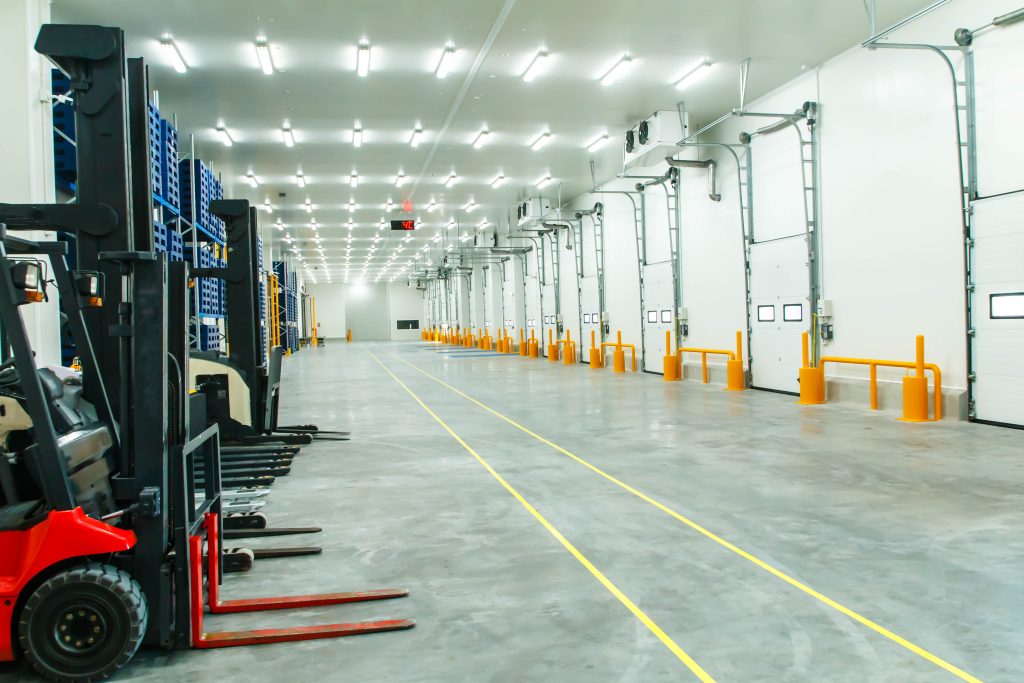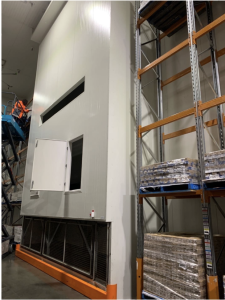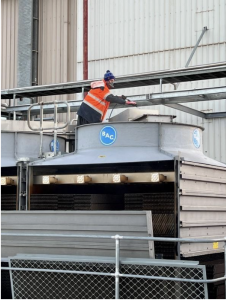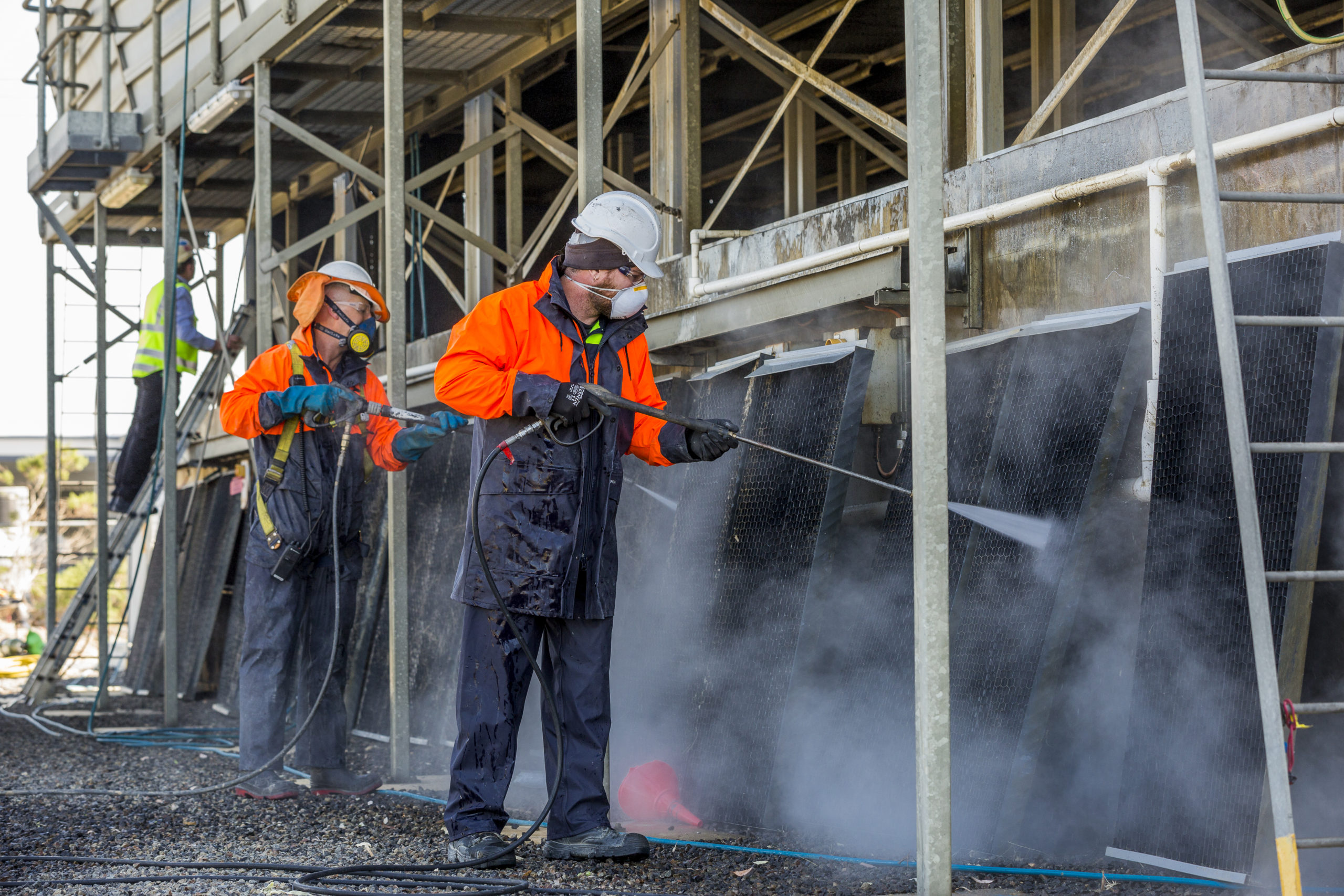Refrigeration distribution centres, also known as cold storage or cold chain facilities, are specialized warehouses or storage facilities designed to store and distribute perishable goods and products that require temperature control. These facilities play a critical role in ensuring the quality, safety, and freshness of temperature-sensitive items throughout the supply chain.
To dive deeper into Refrigeration distribution centres and cooling equipment hygiene, we had the opportunity to chat with Coolclean’s Business manager Grant Nichols.
Grant has 25 years of experience as a food & beverage production hygiene specialist, cooling tower and cooling system manager, heavy industry, light industrial, power generation and commercial institutional applications. He is a qualified air conditioning and refrigeration mechanic having worked for the Australian Air Force, so he has great HVAC knowledge as well.
What are refrigeration distribution centres?
The refrigeration plant is the heart of a distribution centre and is responsible for providing a steady temperature in all areas. Penthouse units are used to store goods that require temperature control, while alcove units are used for storing goods that don’t need refrigeration. Fan coil units are used to move air around the facility while ripening rooms are designed specifically for products such as fruits and vegetables.
Keeping all the equipment clean and sanitary helps them all work together to create a reliable environment that ensures foods remain safe and fresh throughout their journey from farm to fork.
The most important cooling equipment used in distribution centres are:

Penthouse units
Refrigeration distribution centres require specialised infrastructure to ensure that the temperature is kept at an optimal level throughout the entire process. One of the key components of these refrigeration distribution centres is the penthouse unit, which acts as a roof-top cooling system.
The penthouse unit is designed to keep temperatures cool in order to preserve the quality of food products, medicines and other items that require refrigeration during transport and storage. It also helps to reduce energy costs by providing efficient cooling solutions with minimal energy consumption.
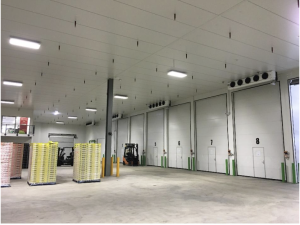

Fan Coil Units
Fancoil units play a crucial role in refrigeration distribution centres by providing temperature control and ensuring optimal environmental conditions. They distribute conditioned air throughout the facility, helping to maintain consistent temperatures in various zones. Fan coil units offer flexibility and zoning capabilities, allowing for precise temperature regulation in different areas, such as chilled, frozen, and ambient temperature zones. These units contribute to energy efficiency and cost savings through features like variable speed fans and occupancy sensors.
Additionally, fan coil units help improve indoor air quality by incorporating air filters and can be equipped with additional features like UV lights or air purification systems. Overall, fan coil units are essential components in refrigeration distribution centres, enabling the storage and distribution of perishable goods while ensuring proper temperature control and maintaining a healthy working environment.
Alcove units
The alcove unit is designed to provide an efficient storage solution for perishable items such as food, beverages, pharmaceuticals, and medical supplies. It has an insulated wall system that helps maintain optimal temperatures while also providing protection from dust, dirt, humidity, and other environmental factors. The alcove unit also features adjustable shelving units that can be used to store different types of products in different sizes. With its advanced design and features, it provides a reliable way to store products in a safe environment while ensuring their freshness and quality.

Cold/ Cool rooms
Without the use of a cool-room, produce and goods can easily spoil and become unusable. With the use of a cool-room, however, refrigerated products can be stored at an optimal temperature for extended periods without spoiling or losing their quality. This is especially important in industries such as food service, where freshness is essential to customer satisfaction. A well-designed refrigeration distribution centre with a cool-room will ensure that products remain in pristine condition until they reach their destination.
Cooling Towers
Cooling towers are commonly installed in refrigeration distribution centres. A cooling tower is a heat rejection device used to dissipate heat from the refrigeration system This is achieved by cooling the heated water that comes back from the refrigeration chiller using evaporative cooling techniques. Cooling tower cleaning play an important role in providing optimal temperatures for the storage and distribution of products, ensuring their safety and quality.
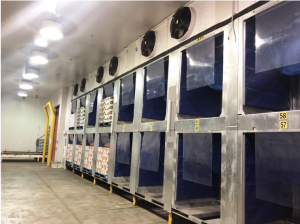
Ripening rooms
Another key component of a refrigeration distribution centre is the ripening room, which provides a controlled environment for the ripening process for bananas, and other fruits. It is important to ensure that these rooms are properly managed to ensure that the ripening process is done correctly, as improper handling can lead to spoilage and loss of profits.

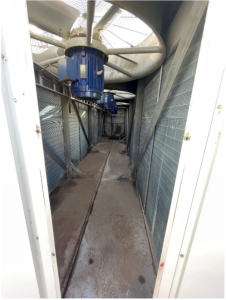
Hybrid refrigeration units
To meet the demands of today’s food supply chain, refrigeration distribution centres need to be equipped with the latest technologies in order to maintain optimal temperature and humidity levels. One such technology is the hybrid unit, which combines traditional refrigeration with modern cooling technologies in one unit. Hybrid units provide a cost-effective solution for refrigeration distribution centres, as they offer efficient cooling and energy savings while also reducing maintenance costs. By using hybrid units, refrigeration distribution centres can ensure that their products remain fresh and safe throughout their journey from production to consumption.

Air handling units
An air handling unit job is to control the temperature of a building. Air handling units provide a range of solutions from cooling to heating and dehumidification, making them invaluable equipment.
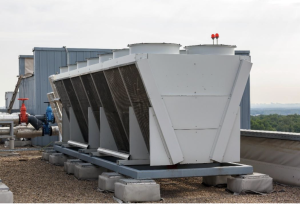
Air cooled condensers
Air cooled condensers are used to cool perishable goods while they are being transported, goods such as dairy, fruit, vegetables, meat, seafood, and other products that require a controlled temperature. To maintain the desired temperature in these mobile cooled storage areas, the air-cooled condensers play a crucial role. Air cooled condensers help to keep the environment cool by absorbing heat from the air inside the facility and releasing it outside. They also help to reduce energy costs by decreasing the amount of energy needed to cool down a large space.
Why it is so important to keep your refrigeration distribution centre disinfected, clean and protected.
Cleaning a refrigeration distribution centre is of utmost importance for several reasons:
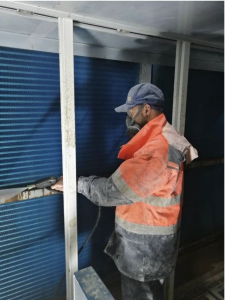
Food Safety: Refrigeration distribution centres store and transport perishable food items, such as fruits, vegetables, dairy products, and meats. Regular cleaning helps maintain hygiene standards and prevents the growth and spread of bacteria, mould, and other contaminants that can lead to food borne illnesses. Clean storage areas and equipment reduce the risk of cross-contamination, ensuring the safety and quality of the stored food.
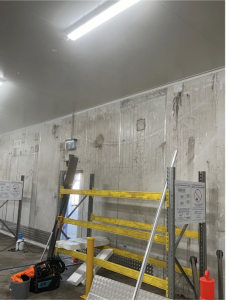
Compliance with Regulations: Refrigeration distribution centres are subject to various health and safety regulations, including those related to food handling and storage. Regular cleaning is necessary to meet these regulatory requirements and maintain compliance. Failure to adhere to cleanliness standards can result in penalties, legal issues, and damage to the reputation of the distribution centre.

Pest Control: Proper cleaning practices help prevent infestations by pests such as rodents, insects, and birds. These pests are attracted to food residues, spills, and unclean storage areas. Regular cleaning removes food debris, eliminates potential nesting sites, and reduces the risk of pest-related contamination.
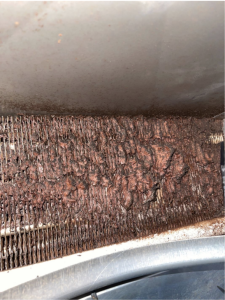
Equipment Maintenance: Refrigeration systems and equipment are crucial for maintaining optimal storage conditions for perishable goods. Regular cleaning of refrigeration units, condensers, evaporators, and air filters helps prevent the accumulation of dirt, dust, and debris, which can impair the performance and efficiency of the equipment. Clean equipment operates more effectively, reducing the risk of breakdowns and ensuring consistent temperature control.
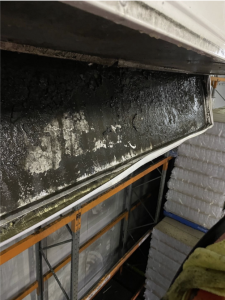
Product Shelf Life and Quality: Clean storage areas and refrigeration equipment contribute to extending the shelf life and maintaining the quality of stored products. Contaminants and improper cleaning practices can lead to off-flavours, odours, and accelerated spoilage. By keeping the distribution centre clean, products remain fresh for longer, minimising waste and ensuring customer satisfaction.
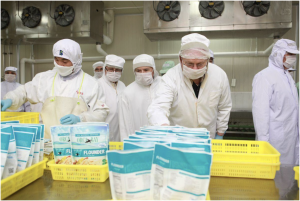
Employee Health and Safety: A clean working environment promotes the health and well-being of employees. Regular cleaning helps eliminate potential hazards, such as slippery floors, cluttered areas, or improperly stored chemicals. It also creates a positive work atmosphere, boosting employee morale and productivity.
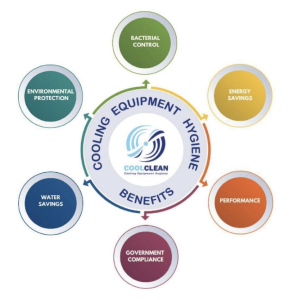
Coolclean’s cleaning process
Grant stated, “Cooling equipment can be extremely dirty equipment. If you think about all of these products sitting in the back of a truck being transported to different locations. This dirt and bacteria enter penthouse units, fan coil units and alcove units. All the potential bacteria and dirt those products come in contact with will then get trapped in places like the fans and coils, and these cause the cooling equipment major long-term issues if it is not looked after properly”. The cooling units circulate the air to cool the entire area, so it is no surprise that the dirt, bacteria, and mould is also circulating within distribution centres.
We do the dirty work to deliver clean results!


Here are some steps that Coolclean take when cleaning cooling equipment:
- Disassembling the cooling equipment units and cleaning the coils, the interior and exterior, as well as the fan grills, fans, and cooling exchange coils. Mould and bacteria samples from before and after cleaning are also collected by our team to stop the need for site operators to get up there to do this.
- At the client’s request, clean the cool room’s walls, ceiling, and floors.
- Keep the HVAC/R unit’s interior and exterior clean.
- Take out the fans and motors and clean the safety grill and the fan blades on both sides.
- Clean coils for increased heat transfer, increasing cooling and cleanliness.
- Unplug drain lines and flush them.
- Keep the fan unit’s interior and exterior surfaces clean.
- Take out and wipe the drip tray to remove condensation. Install a condensate pan tablet to manage pollutants like mould and bacteria.
- Scrub the area around the fan unit.
- Pre- and post-cleaning photo images are provided along with a thorough service report.
- Making that the work adheres to AS/NZS 1668.2 and AS/NZS 3666.2
Coolclean expertise
Coolclean’s expertise is proven by their HACCP as well as their RWTA (Refrigerated Warehouse & Transport Association of Australia) certification.
HACCP

Since Coolclean have been fully HACCP certified since 2018 (5 years), they possess all the necessary knowledge and experience, which is why they believe the HACCP certification is so important, not only the food industry but also the cool room storage industry and the cooling tower industry.
Coolclean’s HACCP Certification includes air handling units, ducted air conditioning, chillers, fan coil units, evaporators, exhaust fans, cooling towers, cool rooms, cold stores, cold storage facilities, and tank pits vessels.
As well as HACCP training, Coolclean’s on-site technicians have also completed a course on food safety concepts and how to apply them to clean cool rooms and refrigeration equipment.
RWTA
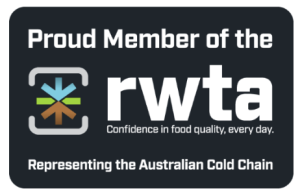
As a member of RWTA (Refrigerated Warehouse & Transport Association of Australia), Cooclean represents the Australian Cold Chain.
The Australian Cold Chain plays a vital role in our economy and society. Coolclean considers it a great privilege to be a member of the RWTA, which promotes collaboration and excellence within the industry.
By satisfying the growing needs of our community, through the provision of temperature-controlled warehousing, refrigerated transport and related essential services, the Australian Cold Chain meets the demands of Australia.
To make sure your cool room is in the hands of the industry specialists give Grant or the guys at Coolclean a call! Coolclean cooling equipment system hygiene experts are always looking out for their clients, providing the highest quality service possible and always making sure that Hygiene and health are always fronts of mind.

